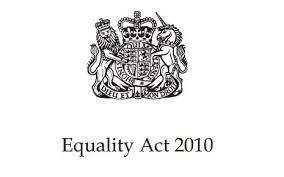Unlawful discrimination in the workplace can relate to an employee feeling that they are being treated unfairly due to their age, sex, disability, race, marriage or civil partnership, pregnancy and maternity, gender reassignment or sexual orientation (all protected characteristics under the Equality Act 2010). If an employee raises a grievance that relates to unlawful discrimination, what steps as an employer do you need to take to ensure that is dealt with correctly?
What is discrimination in the workplace?
If an employee thinks they are being discriminated against due to any of the protected characteristics, then the law protects them from any discrimination regarding recruitment issues, employment terms and conditions, pay and benefits, promotion or transfer opportunities and redundancy or dismissal. Workplace discrimination is defined in four different ways – harassment, direct discrimination, indirect discrimination or victimisation.

Grievance policies and procedures
All companies should have a grievance procedure in place to follow if somebody raises a grievance by either email, letter or conversation or in their resignation. This procedure should align with the ACAS code of practice. If it is suspected that an employee wants to raise a grievance, talk to them and confirm that they wish to start the grievance process. Also, if a grievance is presented after an employee leaves your company, then there also needs to be a process in place for that course of events.
You can try to prevent workplace grievances by having a comprehensive, in-depth and regularly updated grievance policy that employees can access easily. Also, make sure that you have regular staff training on the grievance policy and make all new employees aware during their induction and in their contracts what is expected of them at your company and what behaviours are unacceptable. Making sure you have these actions in place should hopefully reduce the risk of any discrimination in your working environment.
How to deal with grievance claims
Some discrimination claims can be dealt with informally and will be quickly resolved without having to take matters further. However, some claims need to be escalated straight to a formal grievance enquiry which must reflect the Acas code of requirements. It is also essential to consider whether the employee who has raised the grievance can remain in their usual job role and location. They may feel happier moving to a different work environment or being temporarily granted leave with full pay but it is vital that you consult with them first to see what they would prefer to do. If you do not follow these procedures correctly and do not fully consult with the employee raising the complaint, then it could lead to further claims of discrimination or result in a constructive dismissal claim. If you are experiencing workplace discrimination, you can contact Employment Law Friend or a similar firm for information and advice.

How to handle the employee who has been accused of discrimination
It may be beneficial to move the accused employee to a different role or work location whilst the investigation is ongoing. Suspension on full pay should only be used if all other avenues have been explored and this is not confirmation of guilt. It should be emphasised that these changes are only temporary as they could result in breaching the accused employee’s employment contract.

